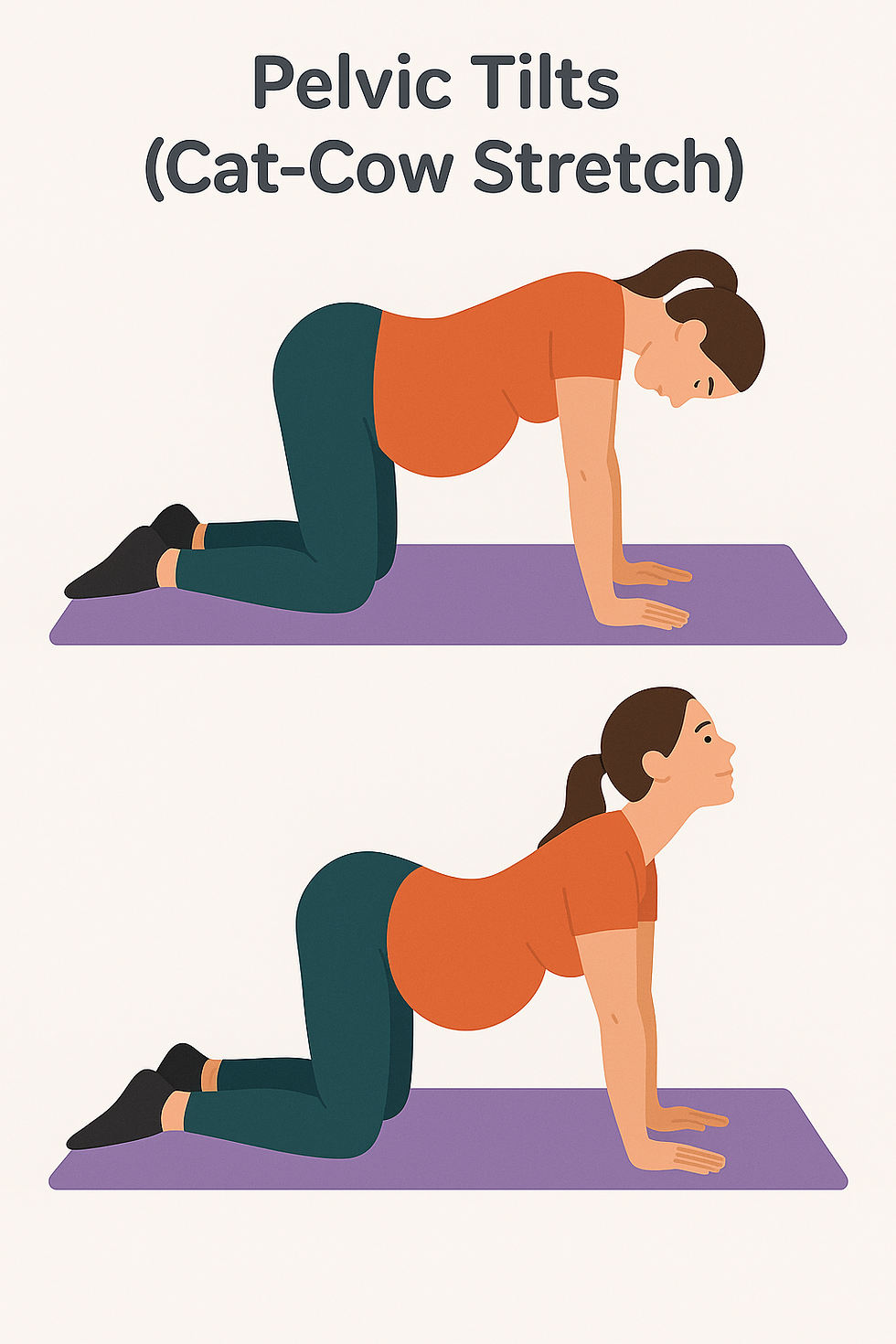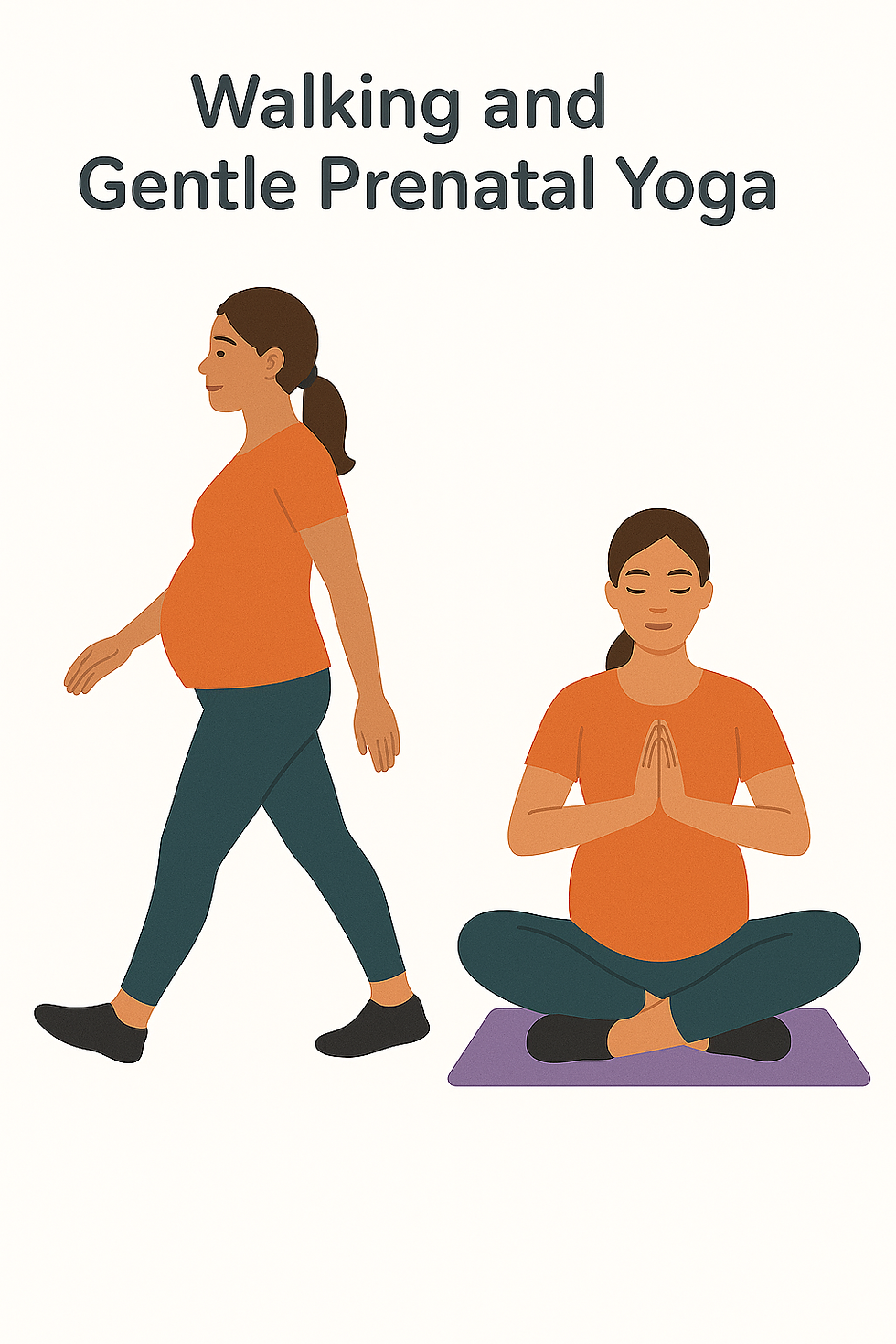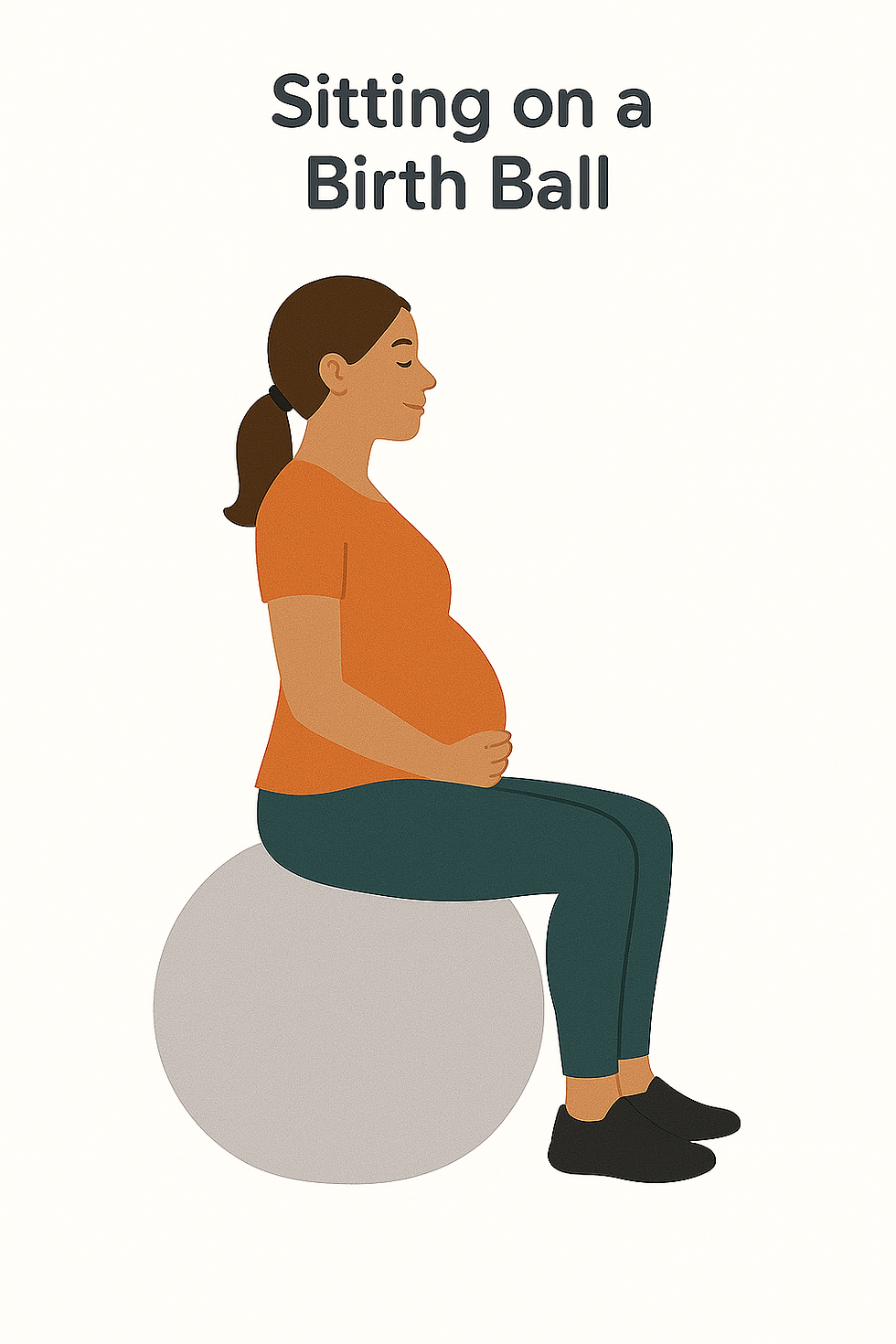Optimal Fetal Positioning at 34 Weeks: Gentle Exercises to Prepare for Labour
- Dr. Girija Wagh

- Aug 2
- 3 min read

As you enter the final stretch of pregnancy, your baby begins preparing for birth. Around 34 weeks, encouraging optimal fetal positioning and engagement can support a smoother labour and delivery. While babies may shift positions on their own, certain safe and simple movements can gently guide them into the ideal position for birth.
🧘♀️ Safe and Recommended Exercises for Fetal Positioning
These exercises help create space in the pelvis, relax surrounding muscles, and use gravity to encourage your baby to move into a head-down, anterior (forward-facing) position:
1. Pelvic Tilts (Cat-Cow Stretch)

This classic yoga movement helps balance your pelvis and relieve lower back pressure.
How to do it: Get on hands and knees. Inhale as you arch your back upward (like a cat). Exhale as you gently drop your belly downward and lift your head (like a cow).
How often: 10–15 times, a few times a day.
2. Forward-Leaning Inversion

This position helps release tension in the lower uterus and encourages the baby to reposition if they are not yet head-down.
How to do it: Kneel on the edge of a bed or couch, lower your hands to the floor, keeping hips elevated and head down.
Duration: Hold for 30 seconds to 1 minute, once or twice daily.
⚠️ Important: Only attempt this with prior approval from your healthcare provider.
3. Side-Lying Release

A calming stretch that promotes symmetry in the pelvic muscles and ligaments.
How to do it: Lie on your side with the top leg hanging gently off the bed or couch, keeping the lower leg bent for support.
Duration: Hold for 10–15 minutes on each side.
4. Walking and Gentle Prenatal Yoga

Regular walking keeps your pelvis mobile, while yoga helps strengthen and align your body.
Tips: Focus on upright, forward-leaning postures and avoid overexertion. A slow, steady pace is best.
5. Sitting on a Birth Ball

Sitting on an exercise ball (birth ball) with proper posture can help open the pelvis and encourage downward movement.
How to do it: Sit upright with feet flat on the floor and gently rock back and forth or in circles.
Avoid: Reclining or slouching positions, which may encourage the baby to move into a posterior position.
🩺 How to Tell if Baby Is Engaged and Well-Positioned
Your baby's position and engagement can influence the onset and progress of labour.
Here's what to look for:
Kicks under the ribs: Often suggest the baby is facing forward (anterior).
Belly shape: A firm, rounded area on one side of the belly may indicate the baby’s back is positioned in front.
Feeling “light” or more pressure below: As the baby engages in the pelvis (often called "lightening"), breathing may feel easier while pelvic pressure increases.
Medical assessment: Your midwife or doctor can check baby’s position by gently palpating your abdomen or using an ultrasound.
⚠️ A Few Important Reminders
✅ Always consult your healthcare provider before beginning any new exercise routine.
✅ Avoid deep squats or exercises that increase pressure in the pelvis until the baby is confirmed to be head-down and well-positioned.
✅ Remember, babies can change positions even late in pregnancy, and some may engage only during early labour.
💬 Final Thought
Staying active, mindful, and informed during these final weeks can positively impact your birthing experience. These exercises aren’t just about positioning—they’re about connecting with your body and baby in preparation for birth. Be gentle with yourself, listen to your body, and check in with your healthcare team as you move closer to your big day.







Comments